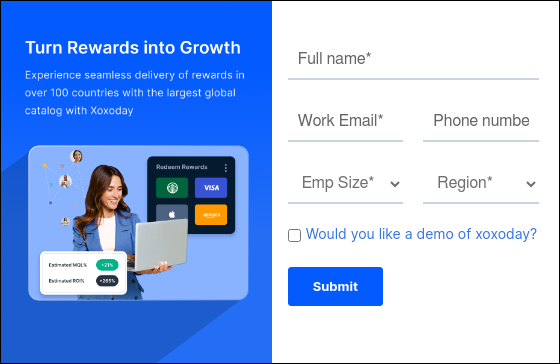
Glossary Terms
Loyalty Points Program
Loyalty points programs are structured marketing initiatives where businesses reward customers for their repeated patronage. Customers earn points for specific actions, such as purchases, referrals, or engagement, which they can later redeem for discounts, products, services, or exclusive experiences.
What are loyalty points programs?
Loyalty points programs are structured marketing strategies designed to encourage repeat purchases and foster customer loyalty. These programs reward customers with points for various actions, such as making purchases, engaging with the brand, or participating in promotional activities.
The accumulated points can be redeemed for rewards, discounts, or exclusive offers, creating a cycle of engagement that benefits both the customer and the business. The overarching aim of these programs is to enhance customer retention, increase the lifetime value of customers, and ultimately drive sales growth.
What are the key features of an effective loyalty points program?
An effective loyalty points program incorporates several key features that enhance its attractiveness and functionality:
- Clear earning structure: Customers should easily understand how to earn points. A straightforward system, such as earning one point for every dollar spent, simplifies participation and encourages transactions.
- Valuable rewards: The rewards offered should resonate with the target audience. For example, if a brand's demographic consists of young professionals, rewards could include discounts on work-related items or access to networking events. This relevance increases the perceived value of the program.
- Personalization: Tailoring rewards based on individual customer preferences enhances engagement. By utilizing customer data, businesses can offer personalized deals that align with customers' interests.
- Flexibility in redemption: Customers should have multiple options for redeeming their points. This could include discounts on future purchases, exclusive products, or experiences that cater to their preferences.
- Regular communication: Keeping customers informed about their points balance and available rewards through newsletters or social media helps maintain engagement and reminds them of the program's benefits.
Gamification elements: Incorporating game-like features such as challenges, leaderboards, and badges can make the program more engaging and encourage participation.
How do customers earn loyalty points?
Customers typically earn loyalty points through various actions:
- Purchases: The primary method is through spending money at participating businesses. Each transaction contributes to their points balance.
- Engagement activities: Customers may also earn points by engaging with the brand on social media, signing up for newsletters, or participating in surveys.
- Referral programs: Some programs incentivize customers to refer friends or family by offering bonus points when new customers make their first purchase.
This multi-faceted approach not only encourages repeat business but also fosters a deeper connection between customers and the brand.
How do businesses benefit from implementing a loyalty points program?
Implementing a loyalty points program offers numerous benefits to businesses:
- Increased customer retention: Loyalty programs are designed to reward repeat business, which helps reduce churn rates and foster long-term relationships with customers.
- Higher average transaction value: Customers are often motivated to spend more when they know they are earning points toward future rewards. This behavior can lead to increased sales volume.
- Enhanced customer insights: Loyalty programs provide valuable data about purchasing behaviors and preferences. This information can inform marketing strategies and product offerings tailored to customer needs.
- Cost-effective marketing: Retaining existing customers is generally less expensive than acquiring new ones. Loyalty programs help maximize the lifetime value of current customers while reducing marketing costs associated with new customer acquisition.
How can LBMS by Giift help businesses in implementing a successful loyalty points program?
LBMS (Loyalty Business Management System) by Giift provides a robust platform for businesses looking to implement effective loyalty points programs. Here’s how LBMS can enhance these initiatives:
- Customizable program design: Businesses can tailor their loyalty programs to reflect their brand identity and meet specific customer needs. This customization can include unique earning structures and reward options that resonate with their audience.
- Multi-channel integration: LBMS supports integration across various platforms—both online and offline—ensuring a seamless experience for customers regardless of how they interact with the brand.
- Real-time analytics: The system provides actionable insights into customer behavior and program performance. Businesses can track metrics such as participation rates, redemption patterns, and overall effectiveness, allowing for data-driven decisions to optimize their strategies.
- Flexible reward structures: LBMS enables businesses to create tiered reward systems that motivate customers to engage more deeply with the brand. Different tiers can offer escalating benefits based on spending levels or engagement frequency.
- User-friendly interface: The platform is designed for ease of use, making it simple for both businesses and customers to navigate the program. This accessibility enhances overall satisfaction and participation rates.
Are there different tiers of membership in loyalty points programs?
Yes, many loyalty points programs feature different tiers of membership. These tiers typically provide escalating benefits based on customer engagement levels or spending thresholds. For example:
- A basic tier might offer standard rewards like discount coupons.
- Higher tiers could provide exclusive benefits such as free shipping, early access to new products, or special event invitations.
This tiered structure not only incentivizes higher spending but also creates a sense of exclusivity among members, encouraging them to strive for higher levels within the program.
How do customers earn loyalty points in a loyalty points program?
Customers primarily earn loyalty points through purchases made at participating retailers or service providers. Additionally:
- They may receive bonus points for engaging in promotional activities such as signing up for newsletters or following the brand on social media.
- Referral programs often allow customers to earn extra points when they refer friends who make purchases.
By diversifying the ways in which customers can earn points, businesses can enhance engagement and encourage ongoing interactions beyond just transactional relationships.








